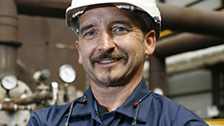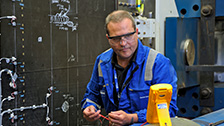Flue Gas Cleaning
Deliver on your environmental and emission objectives with our trusted Circoclean® flue gas cleaning (FGC) solution, using proven fluidised bed technology.
Circoclean’s® advanced technology has been designed around the exacting demands of your WtE plant. Our processes have been developed to meet stringent emissions requirements and provide you with a robust and environmentally sound solution.
Circoclean® forms part of our comprehensive range of world-class air pollution control (APC) solutions, encompassing dry and wet processes, together with fully integrated dedusting electrostatic precipitators (ESPs) and fabric filters.
Circoclean® for WtE Delivers a Range of Benefits
- A compact, high performance and cost-effective reactor design — featuring no rotating or wearing parts — reduces investment costs and minimises your maintenance expenditure
- High flexibility to handle varying pollutant concentrations effectively, including sulphur dioxide, hydrogen chloride and hydrogenfluoride.
- An advanced process that minimises material consumption, water use and residues
- A simple, reliable process that meets all emission control and regulatory requirements
How Circoclean® Works
Pollutants are effectively eliminated thanks to a fluidised bed reactor combined with a downstream fabric filter for particulate separation.
- 1. Fresh additives enter the fluidised bed reactor, where hydrated lime is used to absorb acid pollutant and powdered activated carbon to adsorb heavy metals, as well as poly-chlorinated hydrocarbons such as dioxins and furanes
- 2. The bulk of the solid material is then re-circulated from the fabric filter to the fluidised bed, maximising the use of the additives
- 3. Water is injected to boost the absorption performance and to control the flue gas temperature




